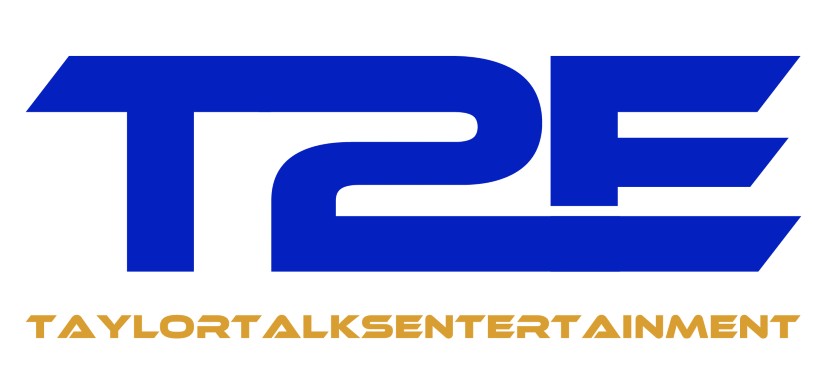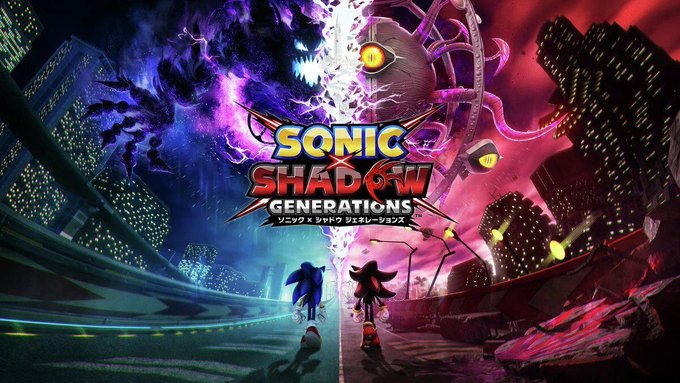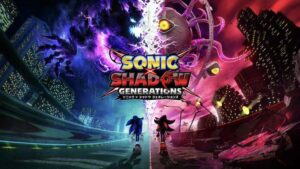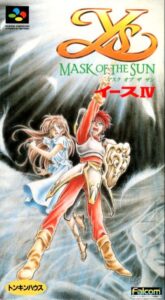Greetings all, this piece has been a long time coming. But Sega declared 2024 the year of Shadow the Hedgehog and fans of the Sonic franchise as well as the character of Shadow were treated to a couple of projects. The end of the year saw the release of Paramount Pictures Sonic the Hedgehog 3, which brought Shadow to the big screen for the first time. But before that we saw a major game release from the Sonic team. Not only did they re-release Sonic’s 20th anniversary game Sonic Generations, but they created a brand-new title to bundle with this re-release, Shadow Generations. Let us delay no longer and dive into this double feature, this is Sonic X Shadow Generations!
Introduction & Background
As we dive into this analysis let us deliver a bit of background for the franchise as well as Shadow as a character. As a franchise Sonic the Hedgehog has roots tracing back to 1991 as a hedgehog with attitude. Focusing on being a high speed platformer to set itself apart from its competition. In the ‘90s one of Sega’s marketing taglines was “Sega does what Ninten-don’t,” taking shots at franchises like Mario.

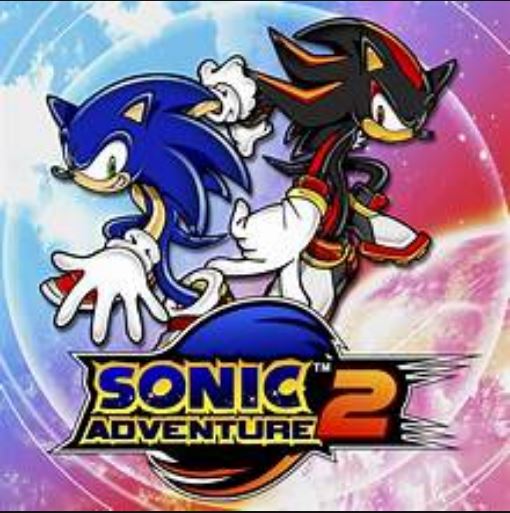
As the game development arms race continued throughout the ‘90s, Sega too would enter development of fully 3-D games. Sonic Extreme would never see the light of day, and the first fully 3-D Sonic game would be Sonic Adventure for the Sega Dreamcast in 1998. And while the Sega Dreamcast would financially underperform, going under in 2001, Sega would release one more Sonic game for the platform under the name Sonic Adventure 2. What looked to be Sonic’s last game would go on to be one of his most beloved and serve as the introduction to several characters to the Sonic franchise who would become mainstays, even today. None more prominent than Shadow the Hedgehog himself.

Shadow was originally written to be a one installment character, exclusively for Sonic Adventure 2 but proved to be so popular with the fans that the Sonic team and Sega elected to bring him back as a franchise regular, making his second appearance in 2003’s Sonic Heroes. This set the stage for the premise of his own game, 2005’s Shadow the Hedgehog. However, quality and critical concerns regarding Sonic games began to appear around this time, mostly criticizing the quality of the games as well as how many characters were involved on the gameplay side of things. So, the Sonic team, following 2006’s Sonic the Hedgehog, made a radical change regarding Sonic’s installments going forward. For the most part mainline installments developed by the Sonic team would only feature Sonic as a playable character, with certain exceptions, a design philosophy that has only started to wane in recent years.
So, it was a surprise to many when the Sonic team announced the year of Shadow the Hedgehog to go along with Paramount’s Sonic 3. 2024 saw the re-release of Sonic Generations, but bundled with it was a brand new title, Shadow Generations, which would build upon the gameplay systems of Sonic Frontiers and tell a new story regarding Shadow that runs parallel to the events of Sonic Generations.
Shadow Generations was developed by the Sonic team and published by Sega, with the title being directed by Katsuyuki Shigihara and Yuka Kobayshi, with the production overseen by Takashi Lizuka and Shun Nakamura. The dialogue of the original script was written by Ian Flynn with Eitaro Toyoda co-writing and adapting the script to and from Japanese. The game was released as Sonic X Shadow Generations on October 25, 2024, with owners of Digital Deluxe editions getting early access three days earlier on October 22nd. Sonic X Shadow Generations saw release for Windows PC, Xbox One, Series S & X consoles, and Nintendo Switch.
Synopsis & Narrative
Most of this section will be focused exclusively on Shadow Generations as it is the new story within the Sonic X Shadow package, however we will touch on changes within Sonic Generations as well. Sonic’s tale largely remains the same with his birthday party suddenly interrupted by the arrival of a mysterious monster, the Time Eater, his friends captured and being flung across time and space. Sonic teams up with his younger self to rescue his friends whilst progressing through events from the hedgehog’s past.

The core story of Sonic Generations remains the same, but Ian Flynn did pen some rewrites to clean up the dialogue in the original script and remove some of the irreverent reference humor that inhabited the original script. Lines were cleaned up, re-written, and re-recorded with some re-casts as well. Characters voiced by the likes of Travis Willingham, Troy Baker, Quinton Flynn, Laura Bailey, and Kate Higgins were replaced by Dave Mitchell, Matt Mercer, Byrce Papenbrook, Erica Lindbeck, and Collen O’Shaughnessey respectively in the English dub. Now, Sonic Generation’s dialogue was in need of tightening up to fit more naturally in 2024.
There were limits to what Ian Flynn could do, as dialogue was changed in places, the animations remained untouched. In layman’s terms this means that the Sonic team didn’t re-animate any of the cutscenes, meaning that the new dialogue had to fit within the old animated mouth frames. The exceptions to this were for post stage cutscenes in the biggest narrative addition to Sonic Generations, that modern Sonic will actually say something after reuniting with one of his friends.

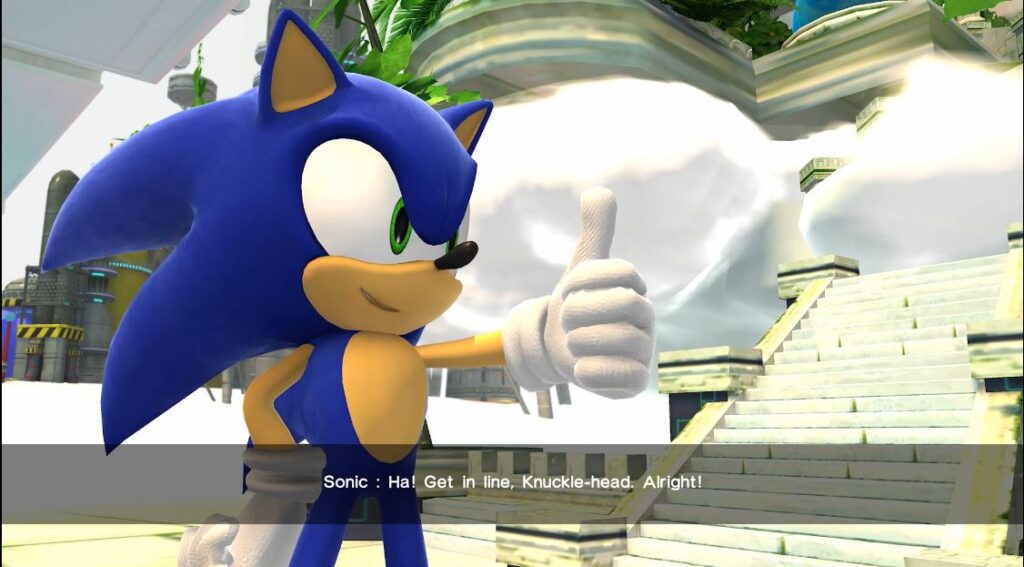
The original release saw modern Sonic as completely silent in these reunions. Classic Sonic would also say nothing but offered more in these reunions through his expressions. The Sonic X Shadow re-release corrects the lack of a reaction from modern Sonic and helps breathe some more life into the story. Whilst the dialogue is tightened up the core story of Sonic Generations is very much the same as it was in 2011, flaws and all.
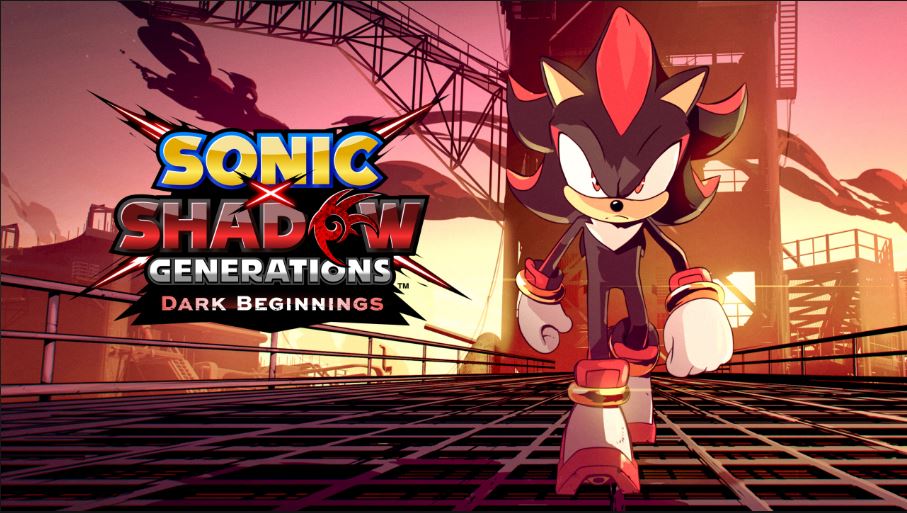
Shadow’s story however, whilst covering some material series fans are familiar with, does cover much more new ground within its narrative. Shadow’s story begins before the events of the game, as was seen in 3-part Dark Beginnings’ animated shorts that acted as a prologue to the game. With Shadow having nightmares about his days aboard the Space Colony Ark prior to the events of Sonic Adventure 2 as well as about the previously vanquished space conqueror Black Doom. Plagued by such nightmares, Shadow begins to investigate unconvinced that these are just dreams. And soon enough he discovers the source behind these on the Space Colony Ark where Shadow’s past once again has come back to haunt him..
Now, while Shadow’s tale can be considered “new” it very much is a rehashing of his backstory, which is a pitfall that 2005’s Shadow the Hedgehog fell into when they started to incorporate Shadow as a mainstay in the franchise. However, Shadow Generations seems to execute this material much better than Shadow’s last titular outing. This story aims to move forward Shadow’s character and grant him something that he has never been able to achieve, closure.
Not saying the story doesn’t have it’s issues. The return of Black Doom while having slightly more buildup than the appearance of the Time Eater in base generations, still doesn’t have much buildup. We get little more than a split-second shot in Dark Beginnings that explains visually how he returns. Black Doom himself is in very little of the game, only showing up after you complete a stage to trash talk and during the interruptions in said stages before showing up in the climax to fulfill the role of the big bad.
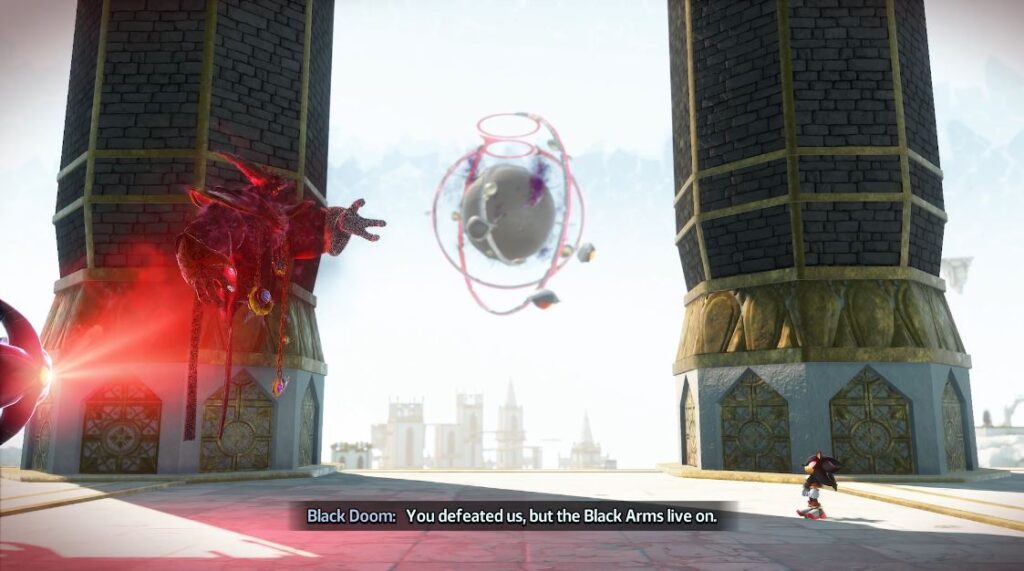
That being said, while Black Doom himself is lackluster as an antagonistic force, the character interactions between Shadow and his supporting cast are beautifully written and give context to both their relationship and reveal plenty of charm, and Orbot and Cubot are there.. This story is also the biggest exposure we have had to Gerald and Maria Robotnik as people. Prior mentions of them have been after the fact. We’ve seen their impact on other characters through their legacy. But this game shows us how they were as people before the Ark Tragedy. This serves to remind us of that tragedy whilst also showing how losing them irrevocably changed both Shadow and Eggman.
Similar to Sonic Generations, Shadow will be exploring locales related to his past, however unlike Sonic’s tale Shadow will also be exploring locations scattered by time that he will visit in the future, as well as a location he hasn’t been to. The Generations style of game is very much focused on revisiting the hits of Sonic and Shadow’s history. Shadow Generations writes in an excuse for including a location that Shadow will visit in the future, however the location representing the recent Sonic Frontiers is strange given that Shadow was not in said title, and has no connection to his character or story being told.
Shadow Generations is a story set parallel to events of the 2011’s Sonic Generations, meaning that every Sonic game post 2011 is not part of the material being represented narratively. This could change in the future if Shadow does end up going to the Starfall islands in a future game or a DLC add-on. An easy solution narratively would have been for this to be an entirely new story that featured Sonic and Shadow as leads in another Generations styled game in which they would have had the freedom to pull material from the 13 years between the original release of Sonic Generations and the present day. A decision that while it’s understandable why they didn’t make it that way, leaves a bit to be desired as the story is limited because it has to fit into a 13+ year old game with a story that wasn’t the selling point of the installment.
As this story does link itself with Sonic Generations, Shadow does have a certain fated encounter…
Narratively speaking, while Sonic X Shadow Generations has its set of problems, it remains a strong showing especially in the Sonic renaissance that has emerged since the release of Sonic Frontiers. Shadow Generation’s story, while being simple in its execution and derivative in some of its material, is one of the stronger showings in Sonic’s modern catalog. It’s arguably the best Shadow has been written since his debut and sets the stage for him to be involved further in the series as a developed character who has put the past behind him.
Gameplay
With Sonic Generations remaining largely the same as its original release gameplay wise, we’ll break down the new additions before diving into Shadow’s portion of the experience. Physics wise, Sonic’s experience is largely the same, but they introduce a new control scheme that players who have played Sonic Frontiers are familiar with, The major change of the new controls is that the boost button is now on the shoulder triggers as opposed to the face buttons in the original release. Strangely enough, a consequence of the new control scheme is that Classic Sonic who operates solely in 2-D environments can no longer move with the D-pad in the default control schemes. Players do have the freedom to change between the new controls and the legacy controls as they please.
Secondly, Sonic Generations offers a brand new collectible in the form of Chao scattered across each level. Sorry to fans expecting the return of Chao garden. Every act contains three Chao to collect, meaning that there are six Chao per each of the nine stages, unlocking further concept art and platforming skills upon collecting them. This is in addition to the 10 red star rings per stage that were present in the original release. Offering a touch more content, but overall the Sonic Generations’ portion of the experience remains the same as none of the bosses were reworked, especially Time Eater.
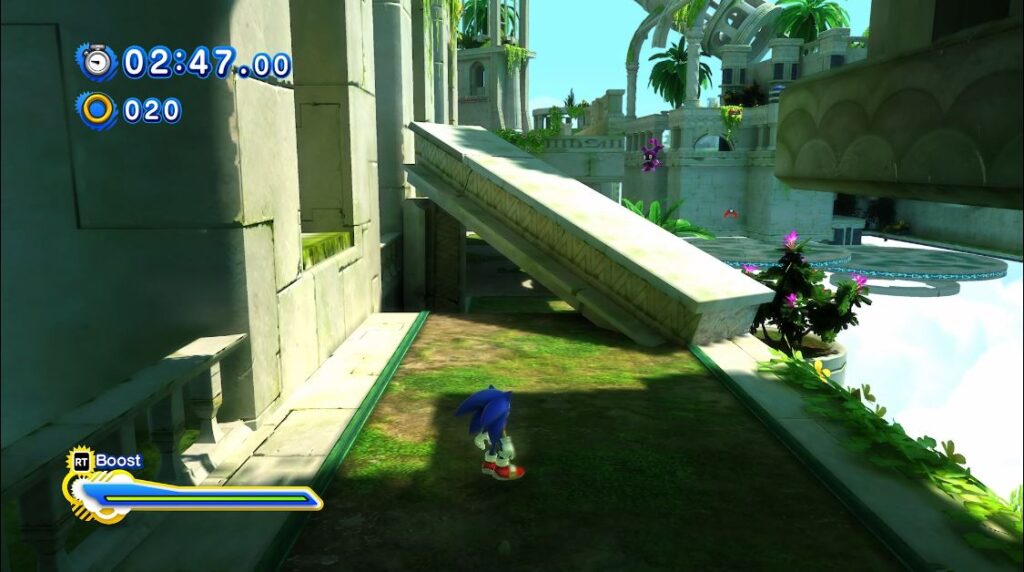
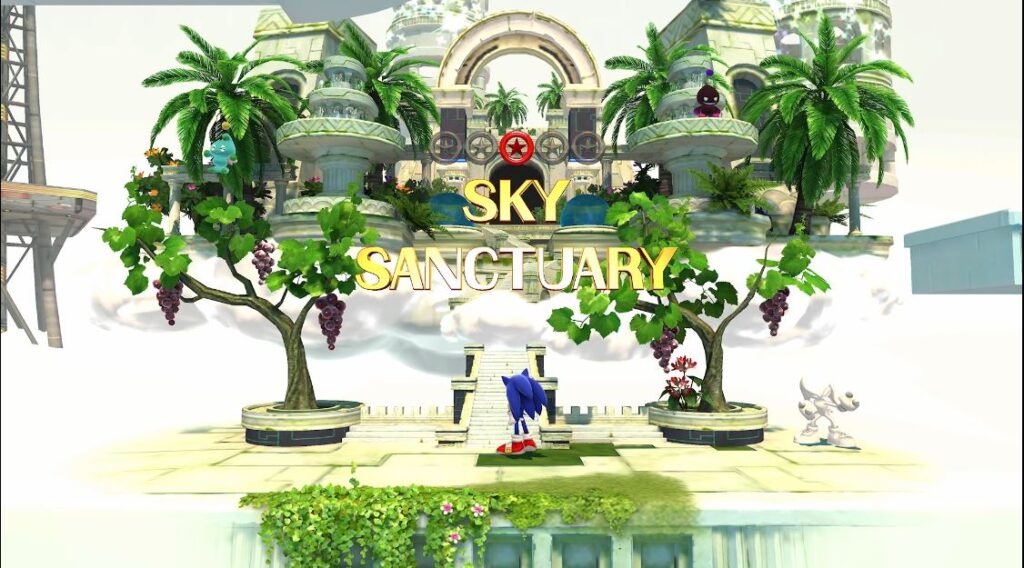
Given that Shadow Generations was the brand new experience that the Sonic team spent 2024 working on, it was the thing people were looking most forward to. And I can understand why. Shadow Generations continues the precedent and formula set by Sonic Frontiers, but let us break this down piece by piece.
As fun as Shadow Generations is, it does offer less content than the original Generations. Sonic Generations had three eras with three stages each for a total of nine stages and 18 individual levels and seven boss fights. Shadow Generations on the other hand offers two eras, six stages excluding the DLC, which we’ll get to in a bit. Outside of add-ons Shadow Generations has 12 individual levels and four boss fights.
Sonic had his showdown with classic Metal Sonic in base Generations, whereas Shadow has an encounter with something a little grander…
The stages themselves may be some of the best boost style gameplay we’ve ever seen from the franchise. The main gimmick of Sonic Generations was that you played as Modern Sonic and Classic Sonic, while classic Sonic’s stages were entirely 2-D. Modern Sonic’s stages were advertised as fully 3-D action. But the reality was that there weren’t entirely 3-D like Sonic Unleashed, but had 2.5-D sections present in the likes of Sonic Colors onwards, as 3-D stages are naturally more involved and difficult to design than 2-D stages.
Shadow Generations on the other hand looks to fulfill that ideal design years later. There is only one Shadow in his story. All of Shadow’s Act 1s are entirely 3-D with his Act 2’s operating in 2.5-D. Not only that, but we have left behind the abysmal stage length and design of Sonic Forces where we would see stages run at 1:30-2 minutes tops. Here we’re back to getting 4-5 minute stages, shorter than the likes of the adventure games yes, but closer in length to the like of Sonic Unleashed, with stages long enough that you get a feel for it and get your fill of it, and not long enough that you’re begging for it to end.
Since Shadow’s debut the Sonic team has struggled to make Shadow play and handle differently from the likes of Sonic, but here they finally cracked the code. Shadow has full use of his chaos powers here; including chaos control, which allows him to temporarily stop time, make use of shortcuts and this is very handy for achieving higher stage ranks. Doom Surf allows him to overcome the weakness of hedgehogs everywhere and operate on water. Doom Spears & Doom Blast allow him to fire projectiles to active switches and launch enemies afar respectively. Doom Morph operates similarly to a certain Sonic Colors Wisp and allows Shadow to move quickly through Doom Sludge and use contextual prompts for trick jumps. And the last of them all is Doom Wing, which operates as the game’s super form allowing Shadow to glide across the environment.
As a game that aims to build upon Sonic Frontiers, I find that Shadow Generations does improve upon it in meaningful ways, but there is a strange omission. In a game that is supposed to celebrate all things Shadow there are no stages from his stand-alone game from 2005. Why put Chaos Island in here, a stage from a game Shadow wasn’t even in? I understand that critically 2005’s Shadow the Hedgehog isn’t very well received. But in what you call “The Year of Shadow” you had the opportunity to smooth out some of the edges of Shadow’s standalone game, but you chose to ignore it completely.
Finally the only piece of post-launch DLC we got was a collaboration with Paramount’s Sonic the Hedgehog 3 tie-in pack, which added one stage to Shadow Generations, adding Night-time Tokyo to the game as well as a skin for use exclusively in that stage. Shadow is also voiced by Keanu Reeves in this stage skin. This skin is not available in other stages. That being said, Modders for the PC version have found ways to enable the skin outside of the stage alongside adding levels from other games to a game that really needs it.
Among the DLC launching with the game was the Sonic Frontiers music pack when combined with the both Generations games having a music swap feature that allows you to change the stage or boss music to any unlocked or downloaded song. allowing players to do things like this…
Conclusion
As a collective package Sonic X Shadow Generations is a strong experience with two great platformers paying homage to much of the hedgehog’s history. However, a $49.99 USD price tag may seem steep to those who aren’t more enthusiastic fans. However at a discount I feel this package is a fine purchase and great for new fans or children to get up to speed on both Sonic and Shadow the Hedgehog, and as such I give it a strong recommendation!
Patron Shout-Out
Special thanks to our generous patrons who help make our content possible and are eternally grateful for your continued support:
Francesco
Lisa
